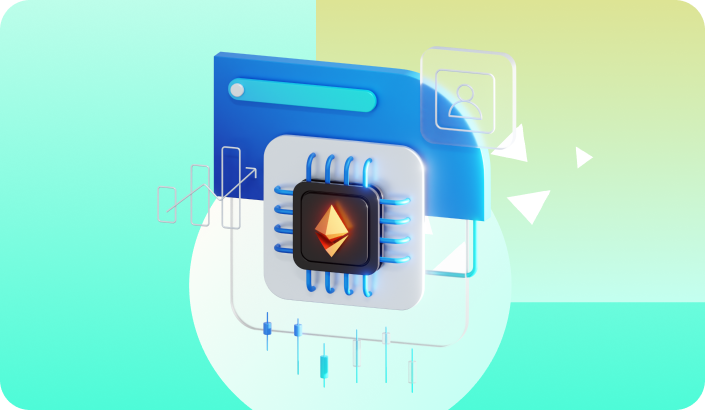
5 ways to analyze a company
Crypto investments always come with incredibly high risks, from outright fraud to huge price drops (many promising altcoins lost more than 90% of their value after the crypto market collapsed in 2018). Some once-promising crypto projects have ceased to exist because developers stopped working on them.
How to do the analysis
In investing, the term DYOR – Do Your Own Research – is common. This means that the investor must rely primarily on his intuition and independently examine the criteria for selecting a project in which to invest. And the more thoroughly he researches, the less likely he is to run into a “garbage” project.
At the dawn of the formation of the crypto market, the requirements for projects were low, which was due to at least two factors. First, cryptocurrencies and the blockchain technology that underlies them were revolutionary. Until 2015, it was not completely clear how widespread they would be, how and where they would be used, so crypto analytics were very superficial. As experts studied the technology, companies and developers came to the conclusion that there was a future for it.
Secondly, ICOs appeared only in 2013, and by 2017 the number of blockchain startups reached several hundred, which caused serious competition. For projects to develop actively, they needed to attract funding.
The analysis of companies comes down to several stages:
- First, you must highlight the criteria by which the project will be evaluated.
- Then, an analysis is performed for each criterion. The more criteria a startup meets, the better.
- Based on the analysis performed, a rating is determined and a decision is made: is it worth investing in this project? At this stage, all the risks must also be weighed.
Assign a grade for each criterion and calculate the average score. If it does not exceed three, then in front of you, most likely, is an unreliable project. Promising projects, even at the very start, disclose enough information so that their full potential can be assessed.
You don’t have to be a professional investor. To learn how to evaluate startups, you just need to follow simple tips which we will discuss below.
Explore the whitepaper
The whitepaper is the most important marketing document that contains all the necessary information about an ICO project: a company’s vision, a description of the problem and its solution, tokenomics, token distribution, information about the project team, etc. It is a must for any company launching a startup, especially if it is its first project.
But before reading the whitepaper, start with a project concept. Typically, companies publish a Light Paper – a lightweight version of the Whitepaper, which contains the main provisions of the project. Having already read the Light Paper, you can understand whether it is worth continuing the research – or is it better to switch to another company? The concept should be clear to the end user and original (not plagiarized).
We have written extensively in this article about what White Paper is and why it is needed. Here, we will just briefly list the main points you should consider first and foremost:
- A project concept is a short description of how the product will work and what problem it solves.
- Description of the problem – in the Whitepaper, the team researches the market and determines what is lacking in the current solutions. The company must show that it understands the problems of the market.
- Solution presentation – how the product solves the described market problems and what benefits it brings to users within the concept.
- Tokenomics – which economic model is used. This section describes how the product is monetized and what tokens are used.
- Token distribution – how many tokens the company will allocate for users, team and various purposes.
- Team – who leads, develops and promotes the project.
- Roadmap – what are the stages of the project and when they are planned to be achieved. The more detailed the Roadmap, the more chances that the project is being seriously worked on.
When conducting crypto analytics, check how the product or service that is presented by the company fits into the concept of the market, or, in other words, helps the user eliminate their pain and make life easier. Ease of perception will be an important indicator. If the description of a solution or tokenomics is difficult to understand, this should be alarming.
Check the team
The future success of a project is not only determined by the innovative idea and product – a lot depends on the team that is working on the implementation. A strong team can “lift” even the least promising startup, while a team without the necessary experience can fail even the most promising idea.
It is important that the project team knows how to find resources to create and promote the product:
- Strong partners and advisers;
- Cooperation with well-known companies;
- Attracting venture investments.
Most often, successful project teams include people with extensive experience in top companies such as Google, IBM or Microsoft. Although Bitcoin was created by an anonymous person or group, it has become an exception due to its revolutionary nature. The requirements for modern ICO projects are higher, therefore, publicity and recognition are important for startups so that they can compete in a tough digital environment.
Team members interested in the development of the project do not hide from their audience and actively interact with it, stirring up interest in their enterprise and encouraging investors to believe in the potential.
Explore the concept of a project
A startup begins with an idea. Even at this stage, it is possible to weed out some of the projects that are unlikely to have any prospects. But the lack of an original idea does not mean that the blockchain startup has no prospects. Therefore, it is important to examine the technical side of the project: maybe the team is solving a trivial problem in a non-standard way or improving an existing solution.
For example, Bitcoin Cash is a hard fork of Bitcoin and does not add any new features, but the developers have increased the block size to accommodate more transactions, which has increased the bandwidth of the network. As a result, the processing time of transactions has decreased, as well as their cost.
When evaluating, you need to analyze the concept of the project and answer a number of questions:
- How workable is the idea?
- How is the team going to implement it?
- What technical solution do the developers present and how does it fit into the startup concept?
- What will its financial service be like?
As tempting or revolutionary as the idea is, the technical implementation is just as important, so it is difficult to evaluate a project early on, even if there is no MVP or prototype of the platform that is about to launch. Promises are not enough to keep investors interested in the project. Check if the creators are adhering to the plan outlined in the roadmap. According to statistics, more than 90% of ICO projects have failed. This means that investors have to set high standards and carefully screen dubious startups.
Find out what people say about the project
We live in the digital age, and media presence is almost the main attribute of any company that expects to be successful both in the near and distant future. If investors are seriously interested in a project, they will talk about it. And they will talk a lot …
Ask yourself a question: what have you heard about the project? Type the name of the ICO project into the Google search box and study the first five links – this is enough to get a first and perhaps the most important impression about the project.
The more interesting the project is for the audience, the more actively it will be discussed. Recall the effect of the heated discussion about the Shiba Inu Token, which grew incredibly over the course of a year and made some owners billionaires. For a while, SHIB even displaced Dogecoin and rose to the top 10 of cryptocurrencies by capitalization.
Companies do not just collect money through ICOs: in return, they give investors project tokenst, from which investors expect growth in the future. Analyze the tokenomics to understand what value the token has, what it is used for, and what role it will play in the ecosystem.
Most tokens offer their investors bonuses and privileges:
- The ability to participate in the development of the platform (DAO). DAO token holders (not to be confused with a decentralized autonomous organization) can propose and vote on changes to the protocol, deciding which direction the crypto project will take.
- Discounts on goods and services. For example, BNB provides discounts on trading commissions to Binance users.
- Rewards for holders. SFP token holders receive new free tokens simply for storing these assets in a wallet.
- Access to exclusive content or events.
Take a look at how the tokens will be distributed and what they will be used for. The value of tokens is determined by their demand, therefore, the more opportunities for their use, the more potential holders will be interested in using them.
What else to pay attention to
Often companies run a preliminary ICO, which can be used to gauge interest in the project. If you have the opportunity, take a look at who invested and how much.
It is not so much the quantity that matters, but the volume of investment: if many investors invest small amounts, such a project is probably not interesting for large players. It’s a different matter if large sums are invested. This means that the whales have entered the game and that the startup can be expected to really take off in the future.
Summary
At first glance, the process of business analysis may seem complicated, but after several such reviews, you will know in 15 minutes whether you should spend time studying the project or whether you are looking at another “dummy” whose weight is supported only by big promises.
The team must have a vision and a long-term plan that shows how and what goals will be achieved. After you create a summary of the ICO project, it will be clear whether you can expect prospects from it.



